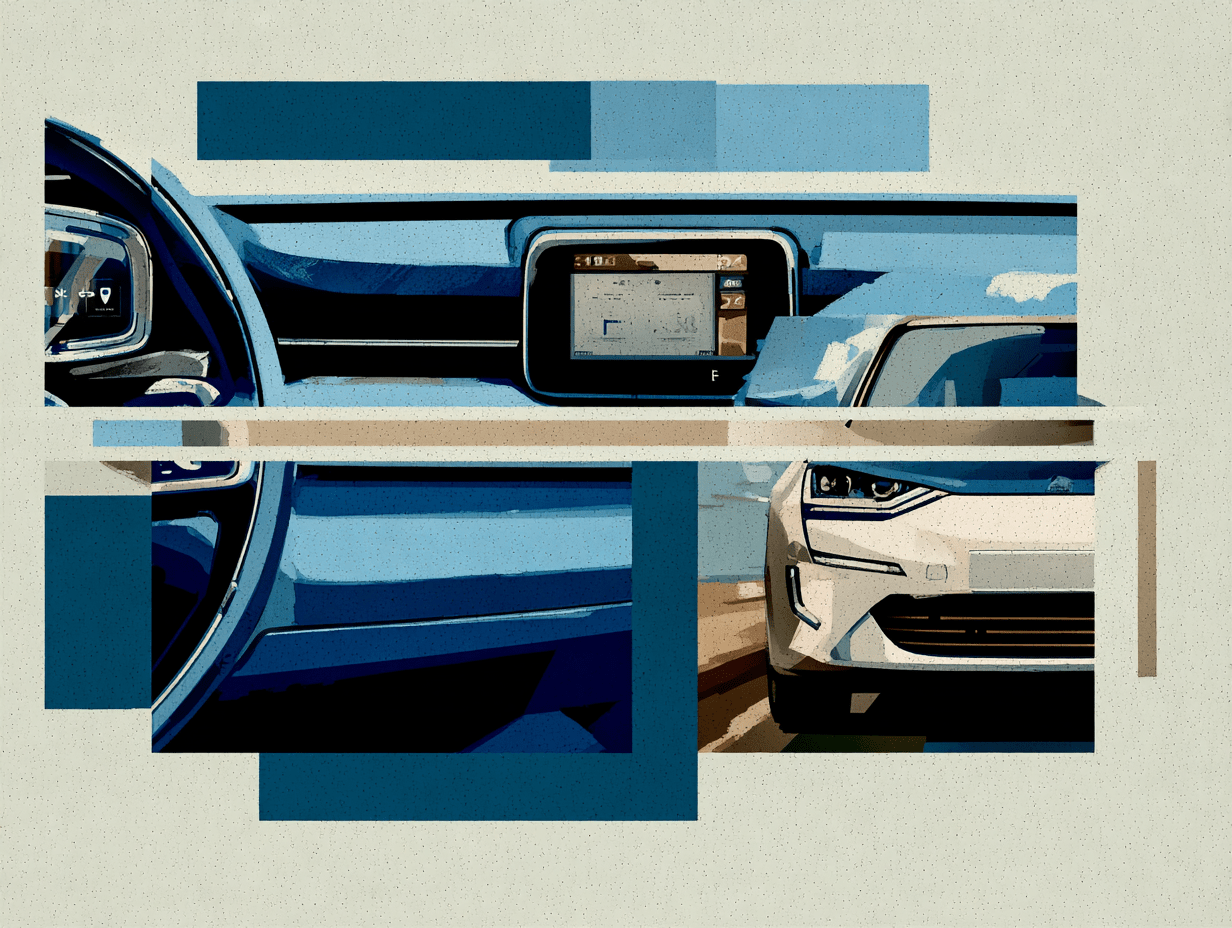The Green Deal in the Automotive Industry: The Mistakes the EU Cannot Afford
Currently, manufacturers are requesting permission to continue using combustion engines. But would such a step backward truly benefit European consumers and workers? A commentary by Francesco Zirpoli

This commentary is part of an IEP@BU series of publications dedicated to the future of the automotive industry in Europe
Following the 2015 Paris Climate Agreement, the Green Deal is the EU’s answer to the ongoing climate crisis. Designed by European institutions based on available technologies, it was also intended to drive industrial renewal.
However, the shifting geopolitical context, characterised by wars and new trade barriers, has prompted major economic players, ranging from oil and gas companies to car manufacturers, to advocate scaling back environmental ambitions. They argue that this would help to restore the EU's competitiveness.
In the automotive industry the focus of this pressure is the revision of the 2023 Regulation setting the requirement for all new cars sold in the EU to be zero-emission at the tailpipe from 2035 onwards — the so-called phase-out of the internal combustion engine (ICE). The regulation provides for a gradual reduction in CO₂ emissions, with interim milestones in 2025 (already postponed by three years) and 2030.
However, it does not ban ICE vehicles sold before 2035, and it leaves open multiple technological pathways to reach the goal.
Notably, the EU regulation on the phase-out of internal combustion engines bans the sale and registration of new ICE cars from 2035, but it does not prohibit their production within the EU.
Manufacturers will still be allowed to produce ICE vehicles for export to non-EU markets. This is relevant, as the EU currently exports around 4.5 million cars out of a total production of about 12 million. At the moment, the overall trade balance is positive, and this also applies to electric vehicle models.
Currently, manufacturers are requesting permission to continue using combustion engines through the adoption of alternative fuels, such as biofuels, as well as hybrid powertrains, including plug-in versions. But would such a step backward truly benefit European consumers and workers?
Even traditional car manufacturers who are now calling for regulatory relief acknowledge that electric mobility represents the future.
They already possess all the technologies needed to produce battery electric vehicles (BEVs), and it is widely recognised that none of the currently available alternative solutions have real long-term industrial potential for private mobility.
These alternatives are less efficient and more polluting than BEVs, even when accounting for different scenarios of energy production, use and environmental impact.
Technological projections indicate that, thanks to falling battery costs, longer lifespans, extended driving range and improved charging infrastructure, consumers will be able to purchase zero-emission vehicles under conditions equal to or better than those of ICE vehicles by 2035. While consumers already have a variety of options today, by 2035 they will not be disadvantaged by the zero-emission target in terms of purchase cost or everyday use.
Therefore, the push to loosen regulatory constraints seems to be mainly motivated by the desire to continue exploiting combustion technologies that offer higher profit margins and require no new investments.
But is this short-term gain for manufacturers truly the way to revitalise Europe’s industry? Will changing the rules to reintroduce hybrids and plug-ins really prevent further job losses?
In fact, both empirical evidence and the Draghi Report on the Future of European Competitiveness, published just a year ago, made it clear that Europe’s lag is due to an investment gap vis-à-vis Asian competitors that has persisted for more than a decade, not regulation.
This is also the view of scholars who study the automotive industry. As before, slowing down the Green Deal will not help Europe catch up with its competitors. Chinese brands such as MG and BYD, Japanese brand Toyota and South Korean brands Hyundai and Kia have gained significant market share in Europe with competitive products, particularly in the small, affordable car segments which European manufacturers have largely abandoned.
The tariffs introduced on Chinese electric cars in 2024 — besides depriving consumers of more affordable models — confirmed the strength of this offering. Chinese brands are pushing sales of hybrid technologies, which are not affected by the tariffs, and are gaining market share in the plug-in and full hybrid sectors.
China’s industrial surge has taken place at a time of weakness for Europe’s automotive sector, which has suffered from years of underinvestment in innovation relating to automation, digitalisation, and electrification.
Furthermore, Europe’s production landscape has been radically reshaped by the model it developed over the past two decades. Traditional manufacturing hubs in Italy and France have sharply declined — car production has fallen by over 60%, resulting in the closure of factories and supplier networks and causing significant job losses.
Meanwhile, Central and Eastern Europe (CEE), particularly the Czech Republic, Slovakia, Poland, Hungary and Romania, has emerged as a new manufacturing powerhouse, accounting for around a third of the EU’s passenger car production by 2023.
German automakers have capitalised on this shift by creating an integrated cross-border production network that combines cost-efficient manufacturing in CEE with high-value R&D and premium production at home.
While this model has sustained competitiveness and employment for years, it is now under strain. Germany’s slow transition to digitalization and electrification and its heavy reliance on the Chinese market have become structural vulnerabilities.
As China accelerates its shift towards electric mobility, European car manufacturers are facing shrinking market shares and mounting pressure to reinvent their industrial model.
These transformations, and the resulting push for innovation, fit perfectly within Joseph Schumpeter’s theory of “creative destruction,” as revisited and expanded by the 2025 Nobel laureates in economics, Philippe Aghion and Peter Howitt.
Innovative new firms such as Tesla and BYD are replacing outdated technologies and business models, forcing traditional European manufacturers to rethink their value chains.
Joel Mokyr, the third 2025 Nobel laureate, emphasizes that growth stems from the interaction between technological knowledge and the cultural, social, and institutional context.
In Europe’s case, maintaining competitiveness in the automotive sector will depend not only on technological innovation but also on coordinated industrial policies (e.g. the Net-Zero Industry Act), as well as institutions that foster knowledge diffusion — such as public-private research centres and collaborative networks between firms and universities that accelerate the adoption of new technologies.
These institutions, together with the social acceptance of technological innovations, are the by-product of a transformation in social norms and of a broader cultural transformation.
Amending the rules introduced just two years ago will not solve the EU’s industrial competitiveness problems or foster growth. On the contrary, a U-turn on the Green Deal would have three major negative consequences.
1. It would distort competition, slow the adoption of innovative vehicles, penalise Europe’s most advanced manufacturers and weaken the EU’s global competitiveness.
2. Erosion of business confidence in Europe among companies that have already invested heavily in decarbonisation technologies, driving innovation and capital away from the continent.
3. Increased uncertainty for consumers would further slow the electric vehicle market, related infrastructure development and emission reductions, to the detriment of both air quality and growth in the automotive sector.
In short, slowing down the Green Deal — especially by changing the rules mid-course — would cause tangible harm to public health and the environment. It would deepen Europe’s current industrial lag by favouring less innovative players, undermine the EU’s institutional credibility and weaken its attractiveness for future-oriented investments. Ultimately, it would damage employment prospects.
According to the framework proposed by the 2025 Nobel laureates, Europe risks falling behind unless it transforms its innovation ecosystem. The challenge is not only technological but also institutional: excessive fragmentation, inconsistent regulation, and delays in investment could stifle endogenous growth and leave room for external leaders such as China, the United States, and South Korea.
The core problem facing Europe is not the emission reduction targets themselves, hence, but a lack of political cohesion.
National governments defend their own interests, major manufacturers exert opportunistic pressure to delay change, and European institutions struggle to build a common strategy, alternating between accelerations, such as the launch of the Green Deal, and abrupt reversals that now threaten to undermine it.
Consequently, rather than leading the transition, Europe risks being overtaken by it and losing its status as a global hub for innovation and investment.
IEP@BU does not express opinions of its own. The opinions expressed in this publication are those of the authors. Any errors or omissions are the responsibility of the authors.
